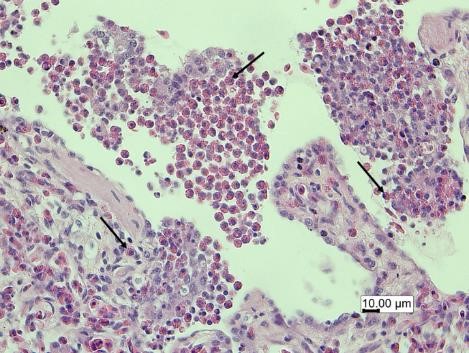Impact of recreational fishing on seagull (Larus dominicanus) rescued on the coast of the São Paulo state: case report
DOI:
https://doi.org/10.21708/avb.2022.16.2.10759Abstract
The seagull (Larus dominicanus) commonly can be observed near human fishing activities, as this species feeds on discards from fishing. This common interaction between a seabird and human fishing activity (both commercial and recreational), provides an easy source of food, but is not without risk for the birds. We report here clinical, radiographic and anatomopathological findings of an esophageal perforation caused by fishing gear in a specimen of Larus dominicanus found alive on a beach in the state of São Paulo which illustrated a harmful effect of stemming from recreational fishing. Clinical examination revealed a nylon thread in the oral cavity with the presence of caseous suggestive of ingestion of lost fishing gear, paralysis of the pelvic limbs and a decrease in the pain reflex associated with sternal decubitus, suggestive of food intoxication. Necroscopic examination revealed two hooks, one in the caudal portion of the esophagus with esophageal and pulmonary perforation, and the other in the muscular stomach. These injuries would have been expected to lead to the death of the bird. These anatomopathological findings confirmed the seriousness of the injuries. This reinforces the importance of studies focused on the interaction of recreational fishing artifacts (hooks, lines) with coastal birds on the Brazilian coast, in order to develop a preventative strategy.
Downloads

Downloads
Pubblicato
Fascicolo
Sezione
Licenza
Copyright (c) 2022 Acta Veterinaria Brasilica

TQuesto lavoro è fornito con la licenza Creative Commons Attribuzione 4.0 Internazionale.
Autores que publicam na Acta Veterinaria Brasilica concordam com os seguintes termos: a) Autores mantém os direitos autorais e concedem à revista o direito de primeira publicação, com o trabalho simultaneamente licenciado sob a Licença Creative Commons Attribution que permite o compartilhamento do trabalho com reconhecimento da autoria e publicação inicial nesta revista. b) Autores têm autorização para assumir contratos adicionais separadamente, para distribuição não-exclusiva da versão do trabalho publicada nesta revista (ex.: publicar em repositório institucional ou como capítulo de livro), com reconhecimento de autoria e publicação inicial nesta revista. c) Autores têm permissão e são estimulados a publicar e distribuir seu trabalho online (ex.: em repositórios institucionais ou na sua página pessoal) a qualquer ponto antes ou durante o processo editorial, já que isso pode gerar alterações produtivas, bem como aumentar o impacto e a citação do trabalho publicado (Veja O Efeito do Acesso Livre).


 Esta obra está licenciada com uma Licença
Esta obra está licenciada com uma Licença 